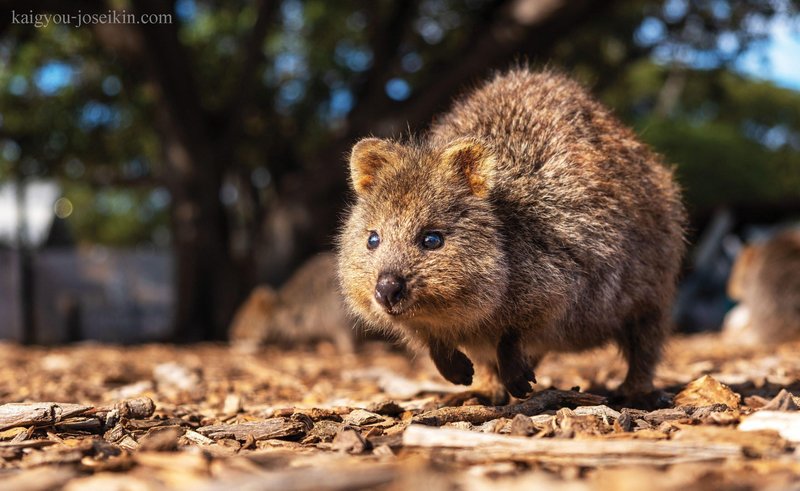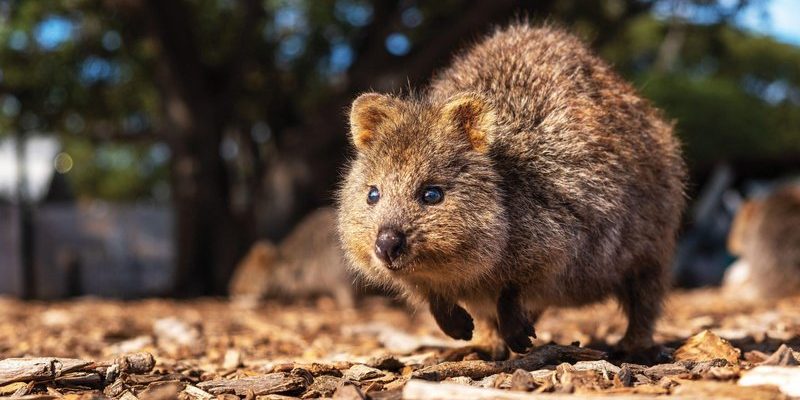
The quokka’s evolutionary journey is a fascinating blend of biology and geography. These little guys, native to Australia, have managed to carve out a niche in some of the most challenging environments. Let’s dive into their history, discovering not just how they came to be but also what makes them so special in the animal kingdom.
The Quokka: A Brief Overview
Before we take a deep dive into their evolutionary history, it helps to know what a quokka is. Quokkas (Setonix brachyurus) belong to the macropod family, which also includes kangaroos and wallabies. They’re small, about the size of a domestic cat, and have round faces, short tails, and a compact build. Quokkas are herbivores, feeding mostly on grasses, leaves, and fruits.
These creatures are primarily found on a few islands off the coast of Western Australia, particularly Rottnest Island. Here’s the thing: while they’re mostly nocturnal, quokkas are often spotted during the day. Their friendly demeanor and willingness to approach humans have made them popular among tourists. But this charm is only a small part of their story.
Origins of the Quokka: Where It All Began
The story of the quokka begins around 20 million years ago during the Miocene epoch. This was a period of significant climate change and environmental shifts in Australia. As lush forests began to give way to open woodlands and grasslands, the ancestors of the quokka had to adapt.
The quokka’s evolutionary roots trace back to the same family as kangaroos and wallabies, which means they share a common ancestor. As Australia’s climate changed, these early macropods evolved and diversified. Quokkas ventured into new habitats, adapting their diet and behavior to the available resources. This adaptability is vital for survival in changing environments, showcasing how evolution is often about flexibility and resilience.
Unique Adaptations of the Quokka
Quokkas have developed a range of unique adaptations that help them thrive. For starters, they’re excellent at conserving water—an essential trait in their often dry habitats. Instead of drinking a lot, they obtain most of the moisture they need from the plants they eat. This is similar to how camels manage hydration in desert conditions.
Moreover, quokkas are primarily nocturnal. This behavior reduces their exposure to predators during the day and helps them avoid the heat. They’ve also adapted to be social animals, often living in small groups, which can provide safety in numbers. Isn’t it fascinating how these traits developed over time to help them survive?
Quokkas and Their Habitat: The Role of Geography
The geography of Australia has played a significant role in shaping the quokka’s evolution. Over millions of years, the continent has shifted, creating various ecosystems where different species can thrive. Quokkas have become specialized for life on the coastal islands and regions with specific vegetation types.
Rottnest Island, for example, offers a unique habitat with limited predators and abundant food sources, making it an ideal home for quokkas. Their isolation on these islands has led to a relatively stable population that showcases how environmental factors can influence evolution. Although they once roamed the mainland, habitat loss and competition led to their decline on the continent, further limiting their range and evolution.
Challenges and Threats Facing Quokkas
Even though quokkas are adorable and resilient, they face several challenges today. Changes in their habitat due to human activity—like pollution, urban development, and invasive species—threaten their survival. Predators like foxes and cats have also impacted their numbers.
Conservation efforts are underway to protect these charming creatures and their habitats. Programs on Rottnest Island focus on habitat restoration, predator control, and public education to raise awareness about the plight of quokkas. It’s a stark reminder of how a small species can be vulnerable due to larger environmental changes.
The Quokka in Culture and Conservation
Quokkas have captured the hearts of people around the world, often becoming symbols of conservation efforts. Their friendly faces make them popular on social media, where they’ve developed a bit of an online celebrity status. This visibility helps shine a light on the need for wildlife conservation, encouraging people to care about their habitat.
There are various initiatives aimed at preserving quokkas and their ecosystem. Partnerships between government bodies, wildlife organizations, and local communities are vital. By collaborating, they can implement strategies that protect these animals and their unique environments. It’s a collective effort that showcases the importance of preserving biodiversity.
Looking to the Future: What’s Next for Quokkas?
So, what does the future hold for quokkas? With ongoing conservation efforts, there’s hope that their populations can rebound. Education plays a crucial role as well; if more people understand the importance of these animals and their habitat, support for conservation efforts can grow.
As we learn about the quokka’s evolutionary history, we also gain insight into the broader themes of adaptation and survival. The quokka’s journey is a testament to resilience and the delicate balance within our ecosystems. By protecting quokkas today, we’re also preserving the rich tapestry of life that has evolved over millions of years.
In conclusion, quokkas remind us of nature’s wonders and the need to cherish and protect our planet’s diverse species. Their enchanting smiles and remarkable history are not just cute— they represent a legacy of survival that continues to unfold in the face of modern challenges. Let’s celebrate these little creatures and do our part to ensure they thrive for generations to come!

